Portugal trails only Italy when it comes to indigenous grape varieties, and the winemaking community propensity toward blending the different types together makes for myriad possibilities when it comes to taste profiles while still maintaining a regional signature. Whether it’s white blends from the northwest corner’s Vinho Verde region, red blends made from traditional Port varieties in the northeastern Douro Valley, or dark red blends from the southeastern Alentejo area, there’s a host of delightful wine available, and most of it is offered at prices that will allow you to fill a corner of your cellar with a range of styles and still have plenty of your budget left for other world regions.
I had the pleasure of doing a virtual tasting with winemaker José Luis Moreira da Silva, the Production Director for Esporão Group operations in the Douro (Quinta dos Murças) and Vinho Verde (Quinta do Ameal). Da Silva enjoys the challenges brought to his daily work from such different regions, with the thriving vines in the rich soils of Vinho Verde contrasting the struggle of the vines in the schist soils of the Douro. The two properties alone offer a glimpse into what’s possible in the northern part of the country. Quinta do Ameal grows the traditional regional grapes with a focus on Loureiro (pronounced Loo-REH-row) with Alvarinho and Avesso, making fresh, vibrant acid driven wines that pair beautifully with seafood, and Quina dos Murças grows the traditional port varieties that include Touriga’s many iterations, Tinta Cão, Tinta Roriz (aka Tempranillo) and so forth (without “intruding” international varieties), producing dry red wines in a range of expressions. My tasting on four of da Silva’s wines:
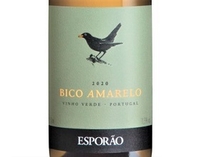 2020 Esporão Bico Amarelo, Vinho Verde DOC, Portugal, $12: Here’s a proprietary blend of Loureiro, Alvarinho and Avesso that’s common in Vinho Verde. The result here is anything but common, with delicate pineapple and citrus aromas that become bolder as palate flavors thanks to bright acidity. It’s simple, delightful, refreshing and a great value – objective achieved! 90
2020 Esporão Bico Amarelo, Vinho Verde DOC, Portugal, $12: Here’s a proprietary blend of Loureiro, Alvarinho and Avesso that’s common in Vinho Verde. The result here is anything but common, with delicate pineapple and citrus aromas that become bolder as palate flavors thanks to bright acidity. It’s simple, delightful, refreshing and a great value – objective achieved! 90
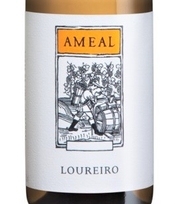 2020 Quinta do Ameal Loureiro, Vinho Verde DOC, Portugal, $18: Vinho Verde is the largest DOC in vineyard area in Portugal and features cool and rainy winters followed by hot, dry summers. Quinta do Ameal is in the Vale do Lima and dates back to 1710. It’s located 30 kilometeres from Atlantic Ocean on the banks of the Lima River, where 30 hectares of Loureiro are planted in granite soils. This particular wine steps well above the level of most of its Vinho Verde cohorts. 100% Loureiro, it shows white flowers, nectarine, acacia and mixed citrus aromas that are lively and attractive. The palate’s lively acidity cuts the silky viscosity nicely and translates the aromatics into flavors well. A clean, dry lingering finish is zesty and invites you back. It’s a tasty summer white worth seeking out for pairing with seafood and salads, and at a bargain price. Add the fact that this will age beautifully and you’ve got a real winner. 92
2020 Quinta do Ameal Loureiro, Vinho Verde DOC, Portugal, $18: Vinho Verde is the largest DOC in vineyard area in Portugal and features cool and rainy winters followed by hot, dry summers. Quinta do Ameal is in the Vale do Lima and dates back to 1710. It’s located 30 kilometeres from Atlantic Ocean on the banks of the Lima River, where 30 hectares of Loureiro are planted in granite soils. This particular wine steps well above the level of most of its Vinho Verde cohorts. 100% Loureiro, it shows white flowers, nectarine, acacia and mixed citrus aromas that are lively and attractive. The palate’s lively acidity cuts the silky viscosity nicely and translates the aromatics into flavors well. A clean, dry lingering finish is zesty and invites you back. It’s a tasty summer white worth seeking out for pairing with seafood and salads, and at a bargain price. Add the fact that this will age beautifully and you’ve got a real winner. 92
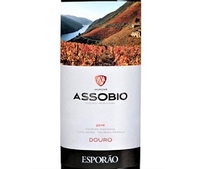 2017 Quinta Dos Murças “Assobio” Red Wine, Douro DOC, Portugal, $14: This blend comes from a 38 year old vineyard planted with Touriga Franca, Touriga Nacional and Tinta Roriz in schist soils. Food friendly structure and fine grained tannins help produce a lighter texture while maintaining great concentration of red and black fruit flavors. It’s a fine bargain! 90
2017 Quinta Dos Murças “Assobio” Red Wine, Douro DOC, Portugal, $14: This blend comes from a 38 year old vineyard planted with Touriga Franca, Touriga Nacional and Tinta Roriz in schist soils. Food friendly structure and fine grained tannins help produce a lighter texture while maintaining great concentration of red and black fruit flavors. It’s a fine bargain! 90
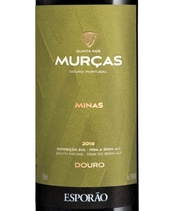 2018 Quinta Dos Murças “MINAS” Red Wine, Douro DOC, Portugal, $24: This wine is a cofermented blend of Touriga Franca, Touriga Nacional, Tinta Roriz, Tinta Cão and Tinta Francisca that is vinified in granite lagares (open top fermenters that are just over knee deep) where it is foot trodden with indigenous yeast, and then aged in concrete vats and neutral oak. It’s quite savory on the nose, and that meaty character carries through on the palate with blackberry, gentle pepper and a little bay leaf. A supple grip keeps the flavors together through a long finish that maintains the savory character nicely. There are plenty of pairing possibilities here – it’ll work great with surf and turf – and the low 13% alcohol will keep it moving through the meal. Another Portugese red that overdelivers value. 92
2018 Quinta Dos Murças “MINAS” Red Wine, Douro DOC, Portugal, $24: This wine is a cofermented blend of Touriga Franca, Touriga Nacional, Tinta Roriz, Tinta Cão and Tinta Francisca that is vinified in granite lagares (open top fermenters that are just over knee deep) where it is foot trodden with indigenous yeast, and then aged in concrete vats and neutral oak. It’s quite savory on the nose, and that meaty character carries through on the palate with blackberry, gentle pepper and a little bay leaf. A supple grip keeps the flavors together through a long finish that maintains the savory character nicely. There are plenty of pairing possibilities here – it’ll work great with surf and turf – and the low 13% alcohol will keep it moving through the meal. Another Portugese red that overdelivers value. 92
Heading south into the Alentejo region, the grape that takes the lead is Alicante Bouschet, a rare “teinturier” – a dark skinned, dark pulp grape like Chambourcin or Saperavi – in the vitus vinifera line that makes for the inky hues in the regional red wines. Here, as in the north, blends are favored, though there is a movement toward some single variety production as methodology in both vineyards and wineries improves.
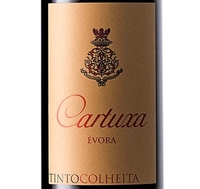 2016 Cartuxa “Évora” Red Wine, Alentejo DOC, Portugal, $25: There’s great concentration of fruit here that’s a bit unexpected if you judge by the color of the wine, which is rather light considering the amount of Alicante Bouschet in the blend. Blackberry, black cherry, soft fall spice and a supple feel. The balance of the elements is held in tension and finishes with complexity of flavor. It’s a very approachable introduction to the subtleties of Alentejo. A blend of Aragonez, Alicante Bouschet and Trincadeira. 92
2016 Cartuxa “Évora” Red Wine, Alentejo DOC, Portugal, $25: There’s great concentration of fruit here that’s a bit unexpected if you judge by the color of the wine, which is rather light considering the amount of Alicante Bouschet in the blend. Blackberry, black cherry, soft fall spice and a supple feel. The balance of the elements is held in tension and finishes with complexity of flavor. It’s a very approachable introduction to the subtleties of Alentejo. A blend of Aragonez, Alicante Bouschet and Trincadeira. 92
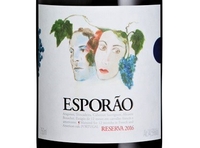 2016 Esporão “Reserva” Red Wine, Alentejo DOC, Portugal, $24: This is a great wine to show your tasting partners what a layered aroma profile is all about. It starts savory, then goes dusty, then cherry, then fresh berry pie as you draw slowly at the rim. It’s all there on the palate, with bright acidity keeping it knit together and keeping the ripe fruit on the lively side. It’ll make a fine cheese course accompaniment, or you could give it a go with roast fowl. If that sounds wildly versatile, then you get my drift. 93
2016 Esporão “Reserva” Red Wine, Alentejo DOC, Portugal, $24: This is a great wine to show your tasting partners what a layered aroma profile is all about. It starts savory, then goes dusty, then cherry, then fresh berry pie as you draw slowly at the rim. It’s all there on the palate, with bright acidity keeping it knit together and keeping the ripe fruit on the lively side. It’ll make a fine cheese course accompaniment, or you could give it a go with roast fowl. If that sounds wildly versatile, then you get my drift. 93
2018 Carmin “Monzaraz Reserva” Alentejo DOC, Portugal, $16: Here’s yet another value leader in Portuguese red. A generously ripe blend of Alicante Bouschet, Trincadeira & Touriga Nacional, it doesn’t let the ripeness take over, keeping the black fruit and crushed rock vibe together with balance and heft. For sixteen bucks, this is pretty hard to beat when it comes to quality and sense of place. 91
2014 Carmim “Reguengos Garrafeira Dos Socios” Red Wine, Alentejo DO, Portugal, $48: This spends 30 months in barrel and 12 months in bottle prior to release, and shows the spice and structure derived from extended time in barrel. It’s ripe, but well managed from start to finish, showing savory, meaty notes alongside blackberry, plum and fall spice. A mild bay leaf accent adds depth, and the wine finishes quite long with good grip. Contains 65% Alicante Bouschet, 20% Touriga Nacional and 15% Trinchadeira. 93
Also impressive is the regional commitment to sustainability and a reduction in energy and water use, from vineyard practices through the winery and down to bottling. Most of the bottles a sampled were very light, thin, yet strong glass that not only eschews current marketing trends but threatens to set a new trend. All of this can, and is beginning to, have cost saving implications for the present, not just the distant future. Just look at the pricing on the above wines – there’s some serious value here.
You can bet I’ll be digging deeper – particularly in Vinho Verde. Obrigado Zé Luis, Kate and Jane for the virtual tour. Here’s to a non-virtual visit in the future!
